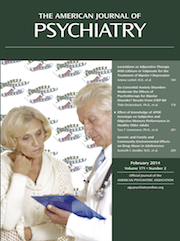Is our culture, with one-fourth of adults mentally ill, devastating itself? Greenfeld contends that it is.
The suicidal course of our species began when the emerging human larynx and brain facilitated speech 20,000 to 30,000 years ago. This transformation enabled a radical progression from articulating signs (an animal capacity) to articulating symbols. Unlike signs, symbols represented phenomena of which they were not part. Symbolic thinking begat the mind, composed of the brain plus ideas gleaned from culturally created environments. Minds became “individualized culture.”
Symbolic thought has yielded both boon and burden for the human species and its emerging mind. Logic and observation, the origins of science, comprise thought forms permitting contradiction. Much symbolic thinking consists of abstractions not liable to contradiction (e.g., shared religious and political beliefs, cultural norms and values) or liable to contradiction only if reduced to stark numbers. Symbolic thoughts, coalesced into systems, show varying consistency and thus are not wholly logical, coherent, or liable to contradiction. For better and worse, symbolic thinking can change suddenly, produce indecision arising from its own incongruities, and even veer from reality. Within the mind’s capacity for symbolism exist the seeds for disabling “madness” or “insanity.”
Next, Greenfeld cogently deconstructs notions of schizophrenia (“pure madness”) and manic depression (“muddled madness”). These key sections elucidate core material for the ensuing sections. They encompass psychiatric history, theory, epidemiology, descriptive psychopathology, and ethnopsychiatry, as well as germane aspects of history, economics, politics, and even theater.
For the remaining half of the book, Greenfeld expounds her thesis. Prior to the Renaissance, religious beliefs were widely shared, and sociopolitical organization was hierarchical. Status was ascribed rather than achieved. And insanity prevalence was low, albeit with special vulnerability among learned, politically elite, and artistic people. Beginning during the 17th and 18th centuries in England, insanity proliferated geometrically from prevalence rates of one in thousands to one in hundreds. In parallel, a modern statehood model (termed “nationalism”) appeared, marked by secularism, growing egalitarianism, social mobility from parent to offspring, rising literacy, novel occupations, university learning, passion, and romance. The first western mental institution appeared (Bedlam in London), followed by the steady evolution of psychiatry within medicine and insanity law within jurisprudence. From England, the insanity epidemic (along with its companion, suicide) spread across Europe and North America within a few centuries.
Numerous studies have shown insanity prevalence rates still growing steadily in the United States. For example, in 1987 one person in 184 received Social Security Disability for a psychiatric disorder; this number increased by 2.5 times to 1 person in 76 by 2007. National Institute of Mental Health-supported national surveys have shown current and lifetime prevalence increases in recent decades, with increasing comorbid conditions. These figures proffer prime evidence for cultural causes of insanity and against narrow biogenetic causation generating steady rates over time. Biological processes fabricate insanity, but mind-borne culture precipitates these biological processes. Although hereditary factors affect vulnerability to insanity, extreme culture-bred pathogens can overcome hereditary hardiness and produce insanity. Likewise, cultural compensations can counteract high hereditary vulnerability and prevent insanity.
Finally, psychiatrist-like, Greenfeld makes a diagnosis and prescribes an intervention for often-addled modern minds. She ascribes our insanity pandemic to “unstable identities” (Durkheim’s “anomie”) ensuing from minds weakened, immobilized, disabled, and ultimately deranged by the complexities of modern “nationalism.” For this malady, she prescribes educational interventions aimed at aiding students to cope with pathogens inherent within their challenging cultures and reflected in their emerging minds.
Greenfeld’s magnificent sweep of several fields leaves her discourse open to quibbles. Her education-based intervention would require clinical trials. Cultural interventions already known and practiced among community psychiatrists might reduce insanity, but they would also warrant research, greater efficiency, and wider implementation (e.g., employment initiatives for all [
1], producing self-aware citizens with greater stress resilience [
2]). Cultural psychiatrists could elaborate her “anomie,” which arises from depleted “intimate social networks” (
3), pathogenic migrations (
4), and discrepancies in actual versus ideal norms that wrench minds loose from their problem-solving proclivities (
5). Further, substance disorders—which Greenfeld notes, but briefly—have accompanied and increased insanity. Alcohol and opium epidemics also appeared in the 1600s and 1700s (
6) and endure endlessly anew, as exemplified in our raging iatrogenic opioid epidemic. Regardless, these points support rather than dislodge Greenfeld’s case. Most telling, her strong contentions overwhelm the brittle claims of biological determinism and alert culture brokers to their urgent tasks.
Those apt to gain most from Greenfeld’s remarkable tome are biological psychiatrists, legislators, and community leaders. Physicians, behavioral scientists, futurists, parents, and academicians will find the read exhilarating and useful. Cultural psychiatrists, ethnopsychiatric investigators, and psychiatric epidemiologists—those least apt to realize totally new understandings—will still find their comprehensions expanded in unanticipated ways.

